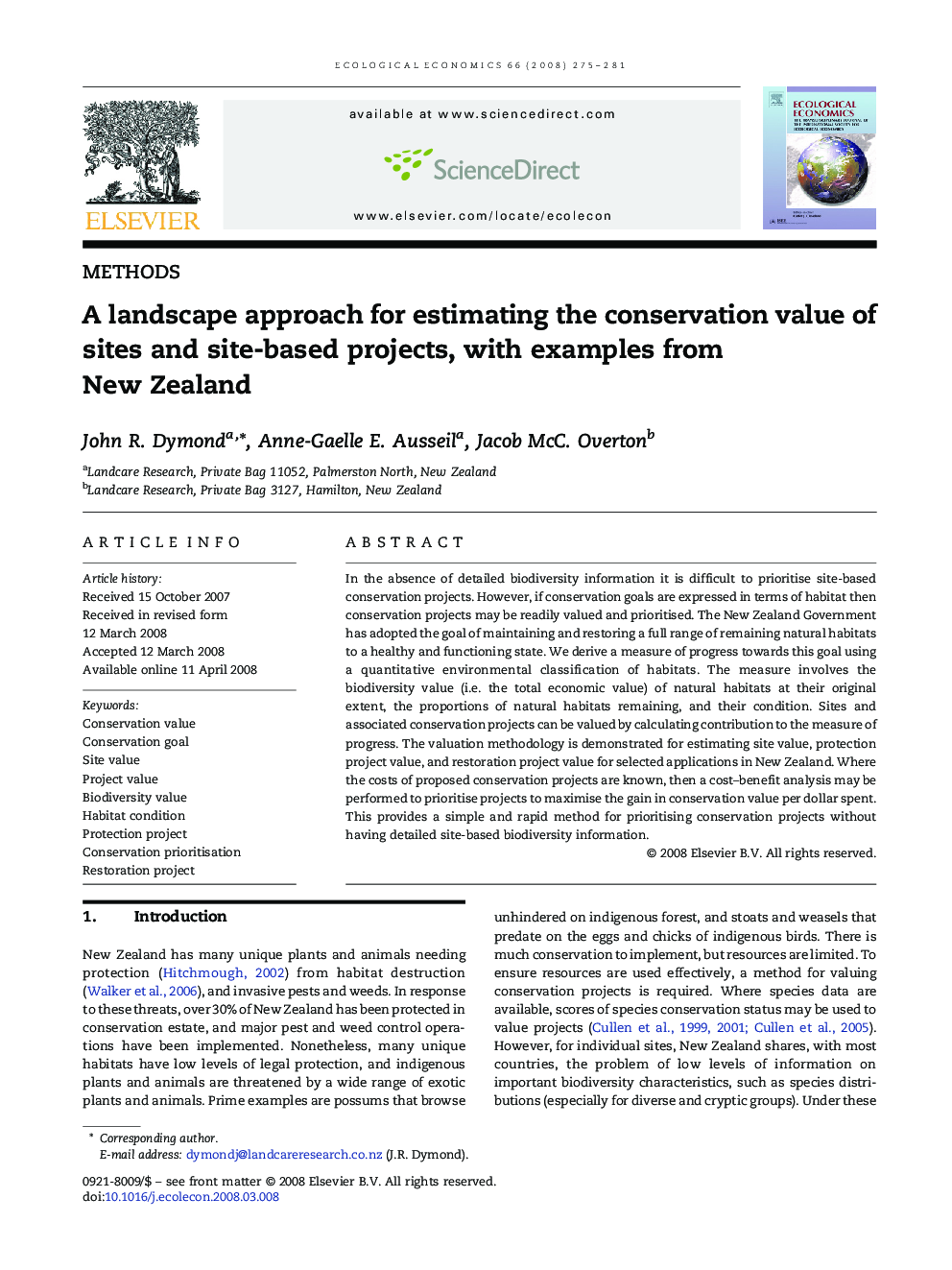| Article ID | Journal | Published Year | Pages | File Type |
|---|---|---|---|---|
| 5051568 | Ecological Economics | 2008 | 7 Pages |
Abstract
In the absence of detailed biodiversity information it is difficult to prioritise site-based conservation projects. However, if conservation goals are expressed in terms of habitat then conservation projects may be readily valued and prioritised. The New Zealand Government has adopted the goal of maintaining and restoring a full range of remaining natural habitats to a healthy and functioning state. We derive a measure of progress towards this goal using a quantitative environmental classification of habitats. The measure involves the biodiversity value (i.e. the total economic value) of natural habitats at their original extent, the proportions of natural habitats remaining, and their condition. Sites and associated conservation projects can be valued by calculating contribution to the measure of progress. The valuation methodology is demonstrated for estimating site value, protection project value, and restoration project value for selected applications in New Zealand. Where the costs of proposed conservation projects are known, then a cost-benefit analysis may be performed to prioritise projects to maximise the gain in conservation value per dollar spent. This provides a simple and rapid method for prioritising conservation projects without having detailed site-based biodiversity information.
Related Topics
Life Sciences
Agricultural and Biological Sciences
Ecology, Evolution, Behavior and Systematics
Authors
John R. Dymond, Anne-Gaelle E. Ausseil, Jacob McC. Overton,
